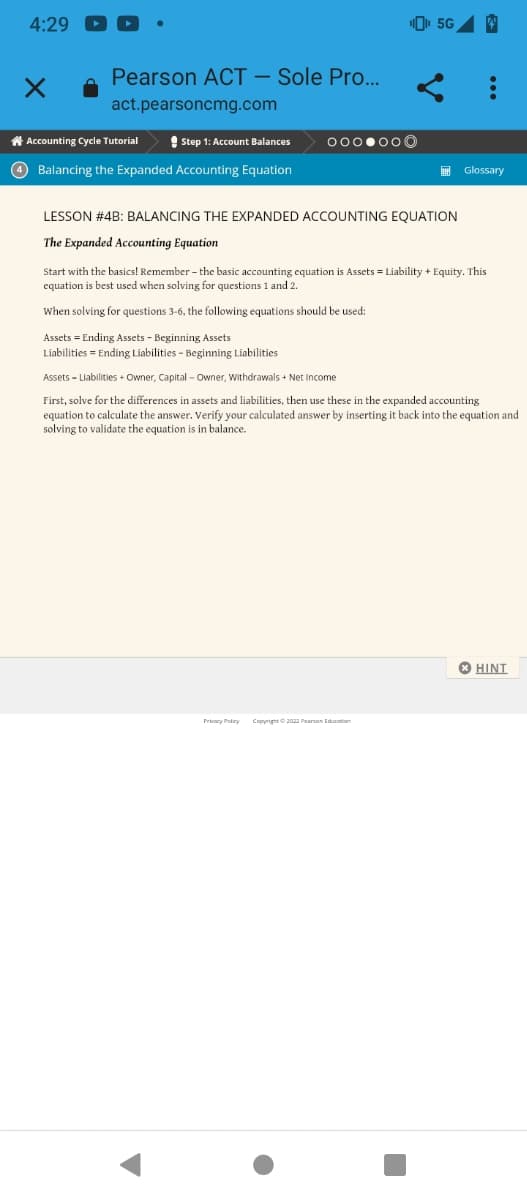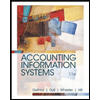sing the expanded accounting equation, calculate and enter the answers for each question. You will need to use the answers you calculate for beginning and ending equity to answer the rest of the questions. Assets Beginning of Year: $25,000 - $19,000 Liabilities End of Year: $60,000 - $25,000 1) What is the equity at the beginning of the year? Beginning Equity 6,000 2) What is the equity at the end of the year? Ending Equity 35,000 3) If the owner contributes $5,400 and the owner withdraws $38,500, how much is net income (loss)? Net Income (Loss) 62,100 This the answers I need help with but you need all of this to answer the questions 4 If net income is $3,400 and owner withdrawals are $8,900, how much did the owner contribute (owner, capital)? Owner, Capital 5) If the owner contributes $16,200 and net income is $19,800, how much did the owner withdraw (owner
sing the expanded accounting equation, calculate and enter the answers for each question. You will need to use the answers you calculate for beginning and ending equity to answer the rest of the questions. Assets Beginning of Year: $25,000 - $19,000 Liabilities End of Year: $60,000 - $25,000 1) What is the equity at the beginning of the year? Beginning Equity 6,000 2) What is the equity at the end of the year? Ending Equity 35,000 3) If the owner contributes $5,400 and the owner withdraws $38,500, how much is net income (loss)? Net Income (Loss) 62,100 This the answers I need help with but you need all of this to answer the questions 4 If net income is $3,400 and owner withdrawals are $8,900, how much did the owner contribute (owner, capital)? Owner, Capital 5) If the owner contributes $16,200 and net income is $19,800, how much did the owner withdraw (owner
Cornerstones of Financial Accounting
4th Edition
ISBN:9781337690881
Author:Jay Rich, Jeff Jones
Publisher:Jay Rich, Jeff Jones
Chapter1: Accounting And The Financial Statements
Section: Chapter Questions
Problem 35E: Exercise 1-35 Accounting Concepts OBJECTIVE 06° A list of accounting concepts and related...
Related questions
Topic Video
Question
sing the expanded accounting equation , calculate and enter the answers for each question. You will need to use the answers you calculate for beginning and ending equity to answer the rest of the questions.
Assets
Beginning of Year: $25,000 - $19,000
Liabilities
End of Year: $60,000 - $25,000
1) What is the equity at the beginning of the year? Beginning Equity 6,000
2) What is the equity at the end of the year?
Ending Equity 35,000
3) If the owner contributes $5,400 and the owner withdraws $38,500, how much is net income (loss)?
Net Income (Loss)
62,100
This the answers I need help with but you need all of this to answer the questions
4 If net income is $3,400 and owner withdrawals are $8,900, how much did the owner contribute (owner, capital)?
Owner, Capital
5) If the owner contributes $16,200 and net income is $19,800, how much did the owner withdraw (owner, withdrawals)?
Owner, Withdrawals
6) If the owner contributes $43,600 and the owner withdraws $1,900, how much is net income (loss)?
Net Income (Loss)

Transcribed Image Text:4:29
X
Pearson ACT - Sole Pro...
act.pearsoncmg.com
Accounting Cycle Tutorial
Step 1: Account Balances
4 Balancing the Expanded Accounting Equation
000.00
5G 4
Privacy Policy Copyright © 2022 Pearson Education
Glossary
LESSON # 4B: BALANCING THE EXPANDED ACCOUNTING EQUATION
The Expanded Accounting Equation
Start with the basics! Remember - the basic accounting equation is Assets = Liability + Equity. This
equation is best used when solving for questions 1 and 2.
When solving for questions 3-6, the following equations should be used:
Assets Ending Assets - Beginning Assets
Liabilities - Ending Liabilities - Beginning Liabilities
Assets - Liabilities + Owner, Capital - Owner, Withdrawals + Net Income
First, solve for the differences in assets and liabilities, then use these in the expanded accounting
equation to calculate the answer. Verify your calculated answer by inserting it back into the equation and
solving to validate the equation is in balance.
HINT
Expert Solution
This question has been solved!
Explore an expertly crafted, step-by-step solution for a thorough understanding of key concepts.
Step by step
Solved in 2 steps

Knowledge Booster
Learn more about
Need a deep-dive on the concept behind this application? Look no further. Learn more about this topic, accounting and related others by exploring similar questions and additional content below.Recommended textbooks for you

Cornerstones of Financial Accounting
Accounting
ISBN:
9781337690881
Author:
Jay Rich, Jeff Jones
Publisher:
Cengage Learning

Accounting Information Systems
Finance
ISBN:
9781337552127
Author:
Ulric J. Gelinas, Richard B. Dull, Patrick Wheeler, Mary Callahan Hill
Publisher:
Cengage Learning

Cornerstones of Financial Accounting
Accounting
ISBN:
9781337690881
Author:
Jay Rich, Jeff Jones
Publisher:
Cengage Learning

Accounting Information Systems
Finance
ISBN:
9781337552127
Author:
Ulric J. Gelinas, Richard B. Dull, Patrick Wheeler, Mary Callahan Hill
Publisher:
Cengage Learning